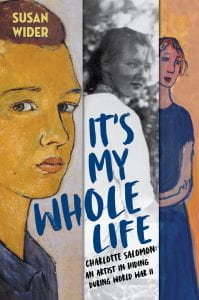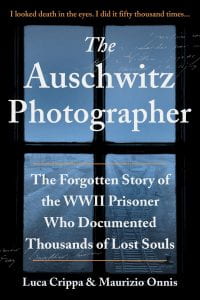 Wider, Susan. It’s My Whole Life: Charlotte Salomon, An Artist in Hiding During World War II. Norton Young Readers, 2022. 978-1-324-01531-4.$19.95. 160 p. Grades 7-12.
Wider, Susan. It’s My Whole Life: Charlotte Salomon, An Artist in Hiding During World War II. Norton Young Readers, 2022. 978-1-324-01531-4.$19.95. 160 p. Grades 7-12.
Illustrated with original drawings and photographs, this brief biography of an obscure Jewish artist living through World War II brings to light a sensitive soul living a troubled life in a troubled time. In a flashback from Charlotte Salomon’s student days at the United State Schools for Applied and Fine Arts in Berlin, the book traces her life from a lonely childhood to her dismissal from the art school–despite her superior talent–to the days in hiding in France at American heiress, Ottilie Moore’s Villefranche. In the midst, the reader learns of the introverted Charlotte’s obsession with art, her rocky relationship with her stepmother, and the cycle of depression and suicide on the maternal side of her family. Charlotte experiences unrequited love with intellectual Alfred Wolfsohn and finds mutual love with co-habitant, Alexander Nagler; they marry, get pregnant, but stay at Villefranche and are sent to their deaths at Auschwitz before she was thirty years old. Charlotte Salomon spent her last years making a visual autobiography entitled, Life? or Theater? She left this important package for her parents to find after the war. Since then, this life tribute has made its way into history gradually. The works of art show a special artist; those with an interest in World War II and the Holocaust will appreciate.
THOUGHTS: Charlotte Salomon may well pass under the radar in this period of history. However, her distinctive artwork and commitment to her art make her memorable. The mental health issues underlying Charlotte’s background reveal pain others may suffer. One puzzling characteristic of Charlotte is her reluctance to save herself during these turbulent times, though it seems she had some opportunities to escape or keep herself hidden. There is also a connection between Charlotte’s parents and Anne Frank’s father, Otto Frank.
Biography Bernadette Cooke, School District of Philadelphia


